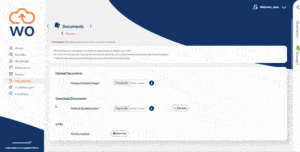Employee onboarding bridges an awkward administrative gap that exists between recruitment and HR.
It covers everything that’s required to make sure a successful job applicant completes the journey to becoming a productive employee.
In theory, this should be one of the simpler parts of the hiring process.
After the stress of recruitment and interviews, you have found the right person for a role. It’s now simply a matter of completing the paperwork.
In reality, it’s one of the most resource sapping and challenging aspects of hiring to get right. And failing to effectively manage onboarding can prove extremely costly.
The recent ‘Welcome Aboard’ study found 46% of UK employees have had negative onboarding experiences and for one-in-ten (11%) this caused them to drop out of the process.
One of the basic difficulties HR managers face when tackling onboarding is terminology. With no industry agreed definitions, where onboarding starts and ends can be confusing.

What is employee onboarding?
Employee onboarding covers all of the tasks that are required to convert successful job candidates into employees. The process starts the moment a role is offered and will typically end when the onboardee starts.
Some organisations include induction within the onboarding process while others treat this separately. The main task to be completed is handling of contracts and offer letters but it includes a wide range of additional admin requirements.
What’s the onboarding gap?
This refers to a common administrative problem that hiring teams face. It’s caused by a lack of connectivity between recruitment and HR processes. Typically, the information gathered during recruitment has to be manually input and transferred across into HR systems.
In practical terms, this means hiring teams having to manually handle large amounts of information – via paper forms or spreadsheets. It creates a slow and error prone way to work and the more new hires being processed, the bigger these administrative problems become.
The benefit of a solution such as Webonboarding is to bridge this gap, creating a seamless flow of information between the various phases of the hiring process. Using a cloud-based approach, Webonboarding automates the process – reducing times and minimising risks.

Why does onboarding matter?
The basic benefit of effective onboarding is a faster and more efficient hiring process. Put simply, the longer it takes to bring new hires into an organisation, the higher the risks become.
In an increasingly competitive hiring environment, candidates will often have alternative options. A frustrating and prolonged onboarding process raises the chances of them looking elsewhere.
The business costs of onboarding dropouts can be considerable. It means missing out on the best talent, as well as the additional financial and admin costs of having to find a replacement.
This is why increasing importance is being placed on the quality of experience that a new starter has as they enter an organisation. Ensuring this ‘journey’ is smooth, positive and welcoming helps to reduce the dropout risk.
Meeting demands of legislative world
Another reason for the growing importance placed on employee onboarding is legislative changes. The recent GDPR revamp of the data privacy laws requires a level of data management that is hard to achieve with traditional paper-based approaches to onboarding.
You can find an overview of the GDPR changes here:
For UK organisations, there’s also the forthcoming changes to employment law that are being introduced by the Good Work Plan legislation. This removes the ‘wiggle’ room that currently exists to provide new starters with onboarding documentation.
There’s more information on the Good Work Plan changes here.



